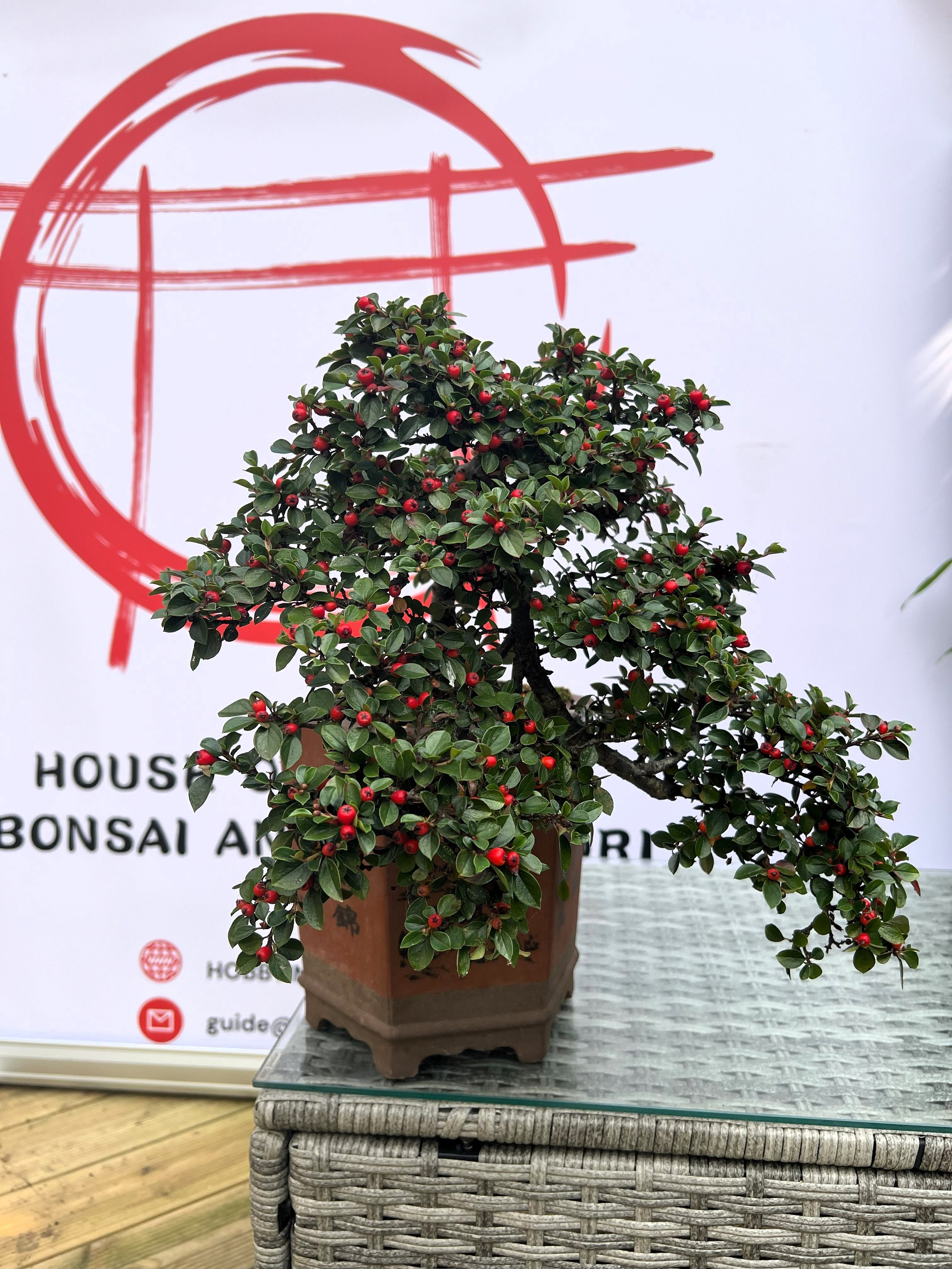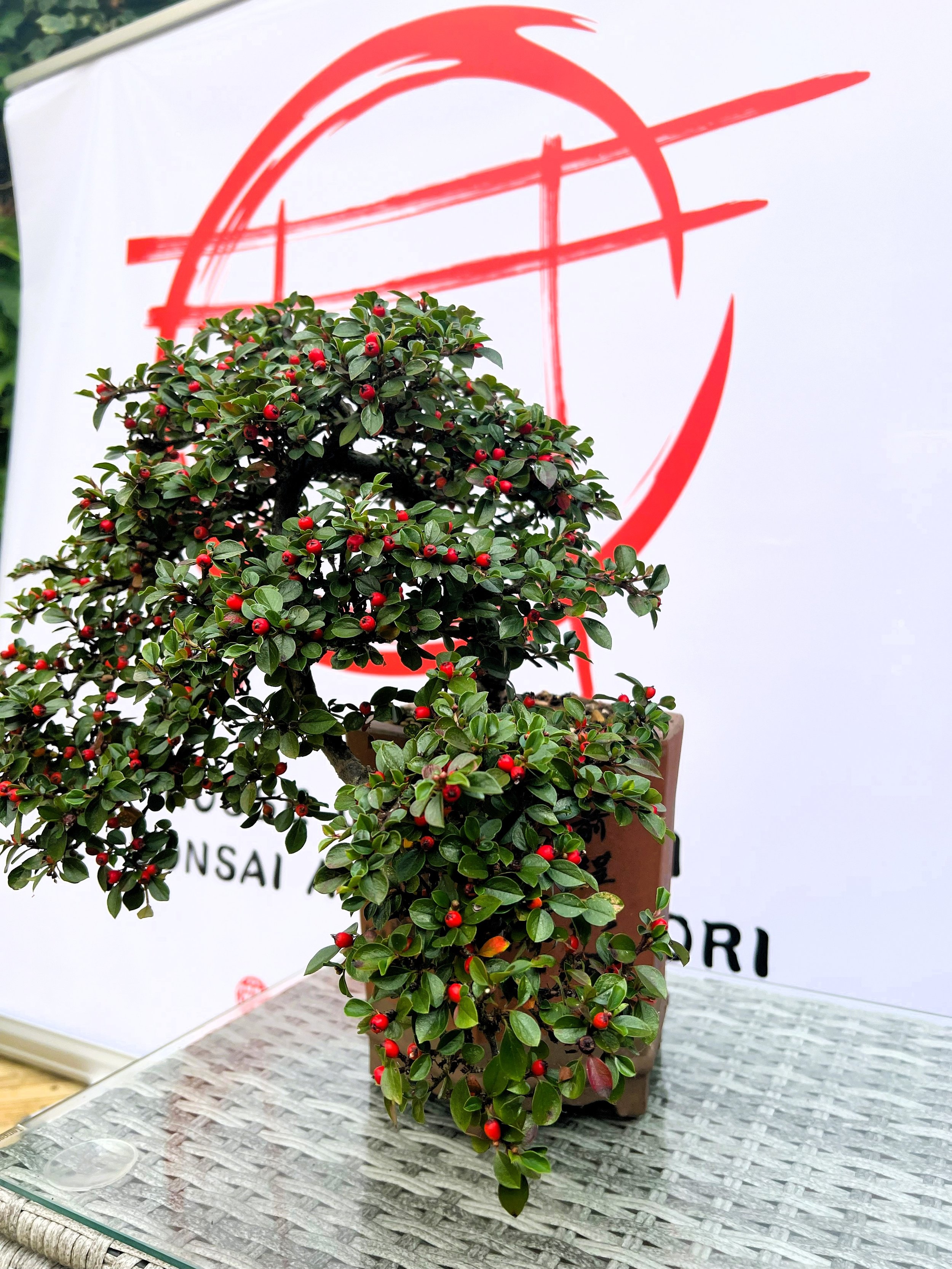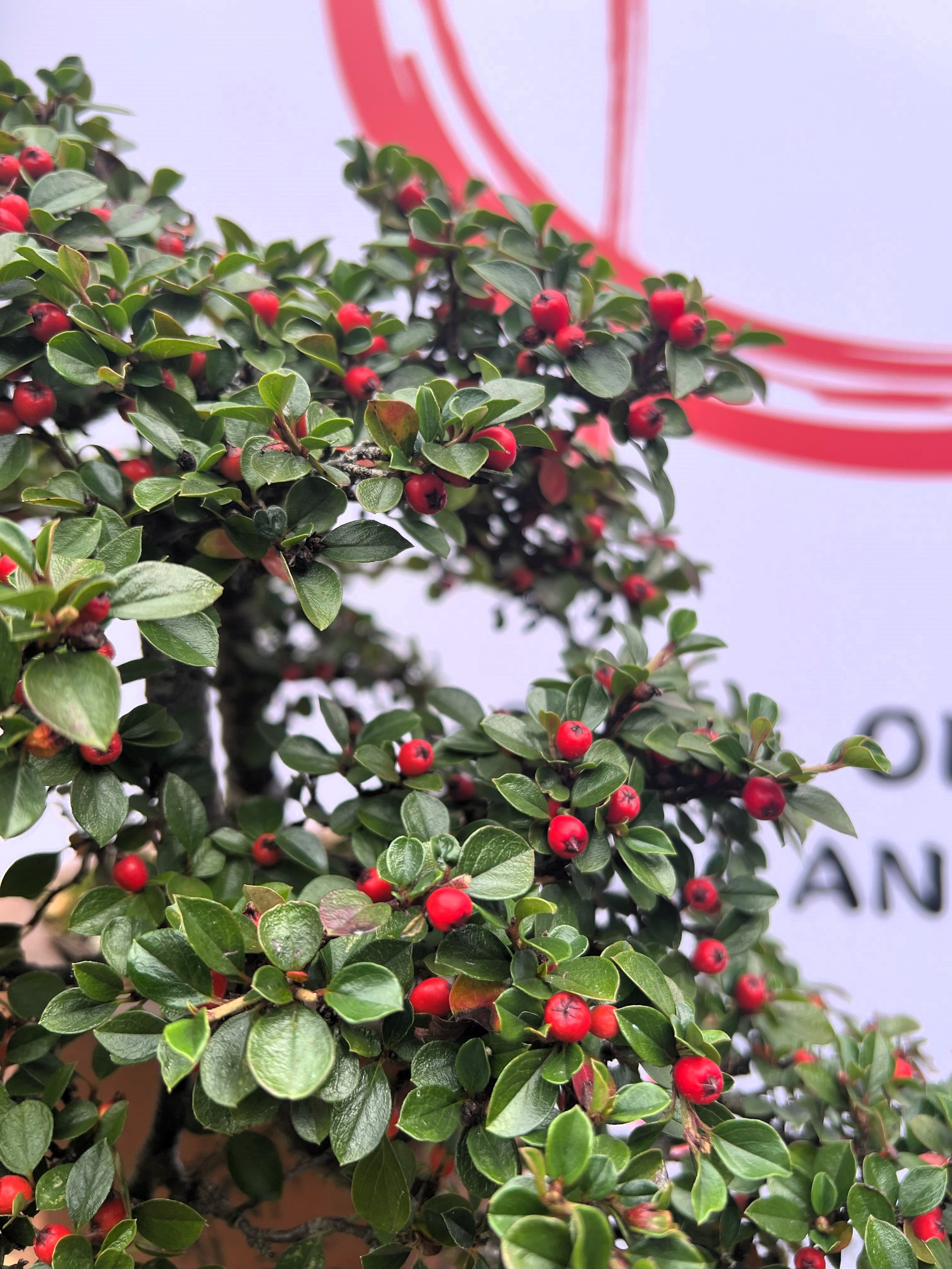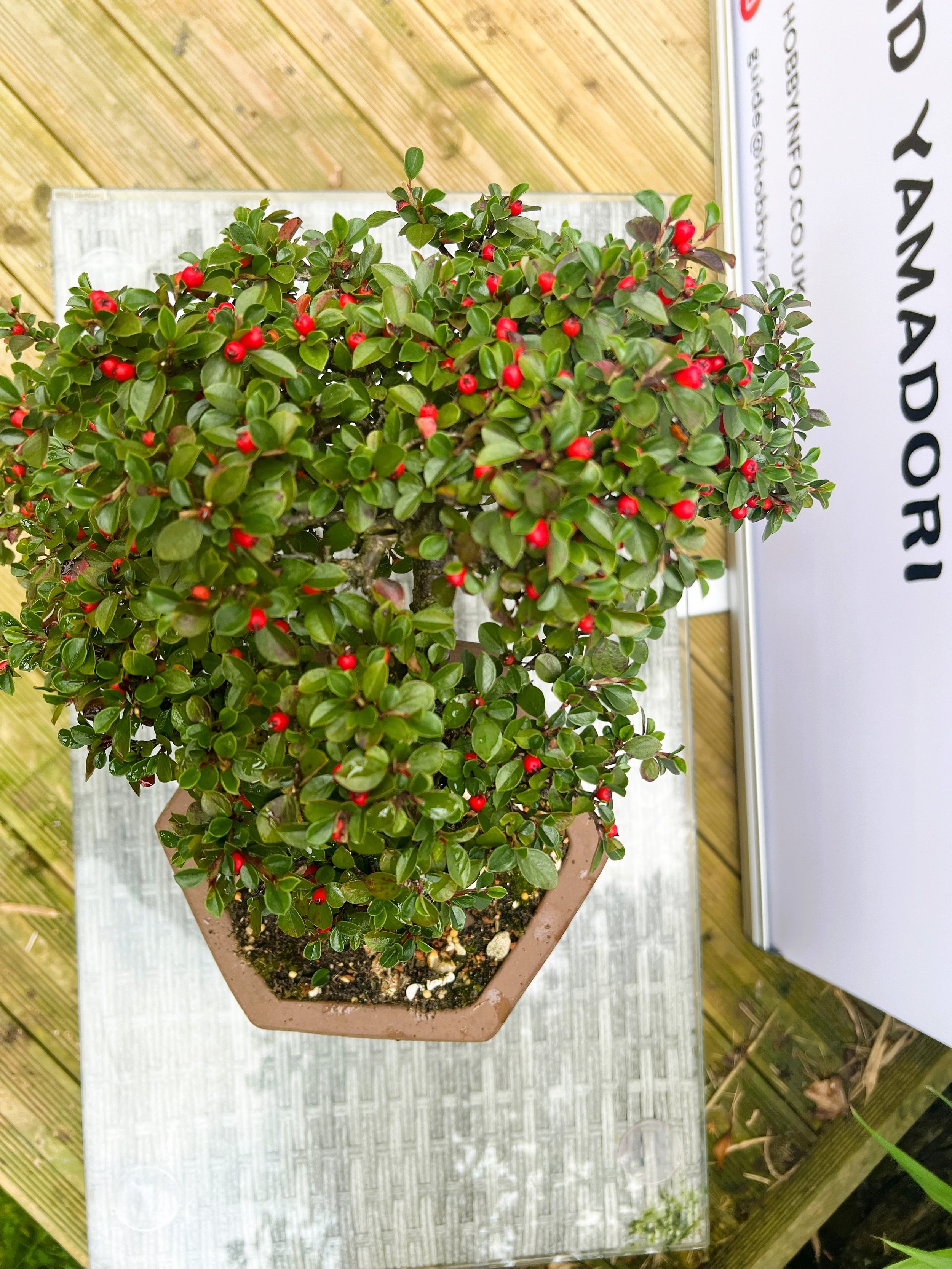 Image 1 of 5
Image 1 of 5

 Image 2 of 5
Image 2 of 5

 Image 3 of 5
Image 3 of 5

 Image 4 of 5
Image 4 of 5

 Image 5 of 5
Image 5 of 5






Cotoneaster horizontalis (1016) - 15 years old
This mature rock cotoneaster in cascade style is approximately 15 years, in training from 2012. The tree is in unglazed Chinese bonsai pot with unique art. Height 45 cm with pot, pot length is 18 cm, UK grown.
Rock cotoneaster (cotoneaster horizontalis) is native to Western China. Cotoneaster’s aesthetic appeal, hardiness, and ease of care make it a popular choice for bonsai cultivation. Cotoneaster is an excellent species for bonsai enthusiasts due to its numerous favorable characteristics. Its small, glossy leaves and vibrant berries make it visually appealing, while its ability to produce tiny white flowers in spring adds to its charm. Cotoneaster is also highly adaptable and resilient, capable of thriving in various conditions, including full sun and partial shade. This species is particularly beginner-friendly, as it can withstand occasional neglect and is tolerant of pruning and wiring, allowing for creative shaping and styling. Additionally, its rapid growth and dense foliage make it ideal for creating intricate bonsai designs in a relatively short time.
This specimen is trained in cascade style, or kengai, a striking and dramatic bonsai style that mimics the natural growth of a tree cascading down a cliffside. In this style, the trunk of the bonsai grows upward initially but then bends downward, extending below the base of the container. This creates a visually compelling effect, as if the tree is struggling against gravity and the elements.
The tree was moved to this pot in 2023, potted into HOBBY Bonsai Premium Soil Mix and will be due to repotted in spring of 2025. It was fertilised with Japanese Biogold Organic Fertiliser and should be continued in accordance with schedule. It is trimmed back for winter display and has a beautiful small red fruits as on photos. It is recommended to avoid further work on branches during winter to protect flower buds for spring blooming. Also, the main trunk is wired in 2019 and it should stay until fully absorbed by the growing bark - it is is a special professional technique helping to thicken the trunk, which otherwise remains thin and featureless even in mature plants.
This mature rock cotoneaster in cascade style is approximately 15 years, in training from 2012. The tree is in unglazed Chinese bonsai pot with unique art. Height 45 cm with pot, pot length is 18 cm, UK grown.
Rock cotoneaster (cotoneaster horizontalis) is native to Western China. Cotoneaster’s aesthetic appeal, hardiness, and ease of care make it a popular choice for bonsai cultivation. Cotoneaster is an excellent species for bonsai enthusiasts due to its numerous favorable characteristics. Its small, glossy leaves and vibrant berries make it visually appealing, while its ability to produce tiny white flowers in spring adds to its charm. Cotoneaster is also highly adaptable and resilient, capable of thriving in various conditions, including full sun and partial shade. This species is particularly beginner-friendly, as it can withstand occasional neglect and is tolerant of pruning and wiring, allowing for creative shaping and styling. Additionally, its rapid growth and dense foliage make it ideal for creating intricate bonsai designs in a relatively short time.
This specimen is trained in cascade style, or kengai, a striking and dramatic bonsai style that mimics the natural growth of a tree cascading down a cliffside. In this style, the trunk of the bonsai grows upward initially but then bends downward, extending below the base of the container. This creates a visually compelling effect, as if the tree is struggling against gravity and the elements.
The tree was moved to this pot in 2023, potted into HOBBY Bonsai Premium Soil Mix and will be due to repotted in spring of 2025. It was fertilised with Japanese Biogold Organic Fertiliser and should be continued in accordance with schedule. It is trimmed back for winter display and has a beautiful small red fruits as on photos. It is recommended to avoid further work on branches during winter to protect flower buds for spring blooming. Also, the main trunk is wired in 2019 and it should stay until fully absorbed by the growing bark - it is is a special professional technique helping to thicken the trunk, which otherwise remains thin and featureless even in mature plants.
